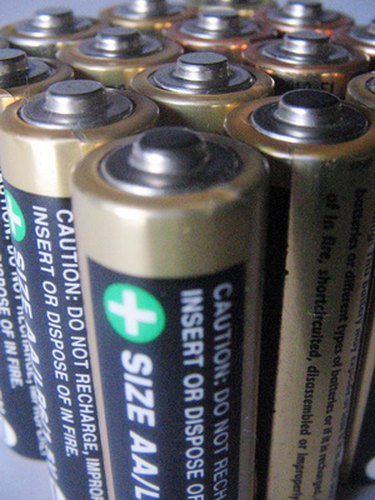
Rechargeable batteries, like standard batteries, utilize an ionic chemical paste within them that provides the battery with its ability to be charged, and to maintain a charge at full capacity. With non-rechargeable batteries, it is always assumed that the unit is purchased with a full charge and is discarded after it has been depleted. With rechargeable batteries, it's difficult to know if an older one is accepting a full charge. To see if a rechargeable battery is accepting a full charge, a multimeter may be used to test it after a charging cycle is completed.
Step 1
Place your rechargeable battery into its approved battery charger and allow the unit to charge for the recommended length of time.
Video of the Day
Step 2
Turn on your multimeter and adjust the measurement dial to measure direct current, making sure to set the dial to measure at least the maximum number of volts the battery is capable of providing. If there is setting on your multimeter that matches the amount of volts your battery provides, set the dial to measure the next-higher voltage number. For example, if you have a 3.7-volt battery and your meter has a 6-volt setting, set the dial to measure 6 volts.
Step 3
Touch the metal tip of the meter's black probe wire to the negative (-) end or terminal of your battery, and then touch the metal tip of the meter's red probe wire to the positive (+) end or terminal of the battery. When touching them to the battery, observe the voltage reading on your multimeter's display. If the voltage is significantly less than what the battery should have after a full charge, the battery may be nearing the end of its useful number of recharges.
Video of the Day